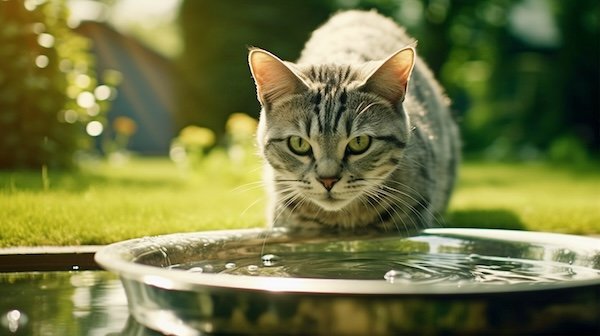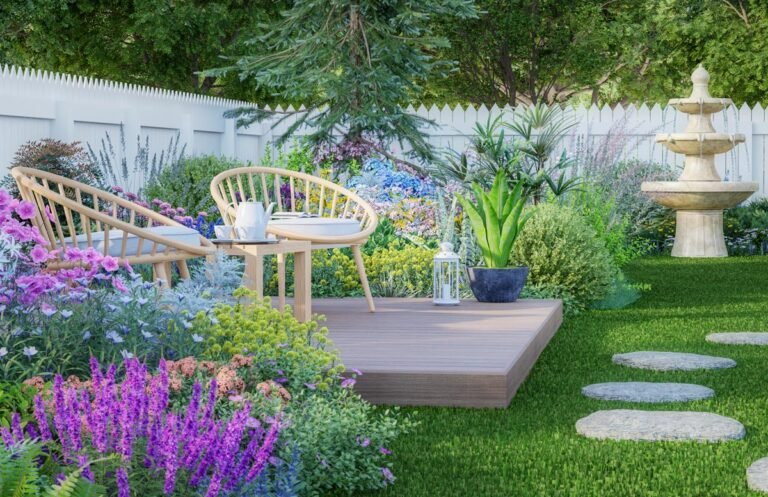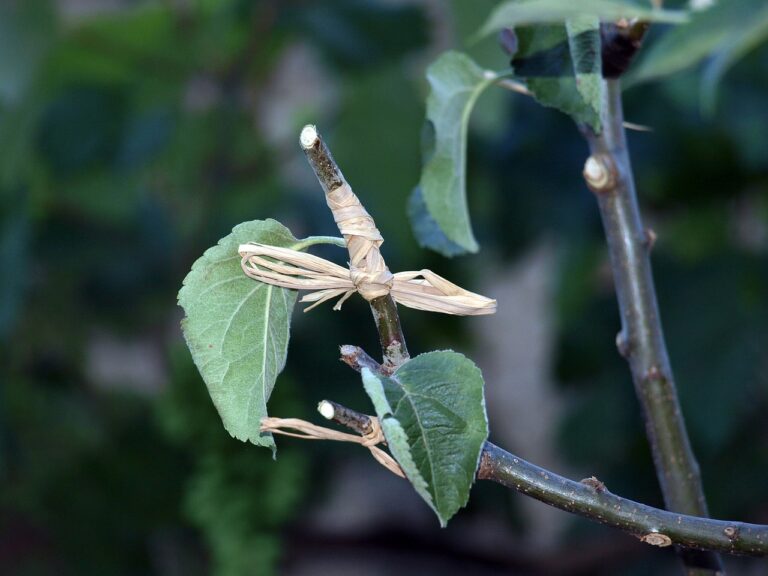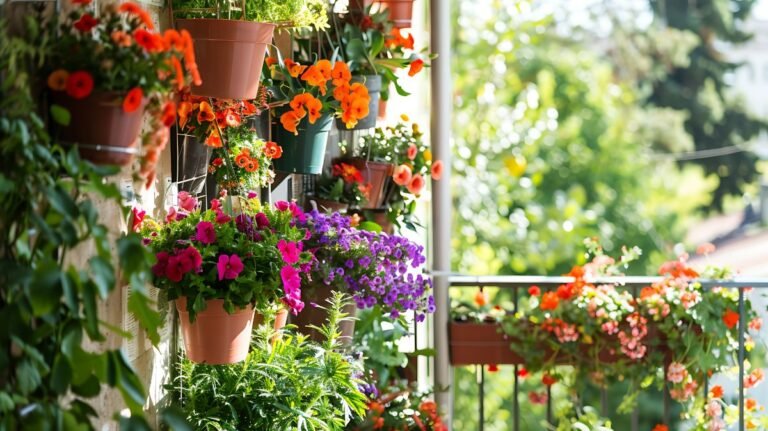July, with its long, warm days that last until late in the evening, is the ideal month to devote yourself to your garden or terrace, even after work, and to organise parties surrounded by the splendour of flowerbeds and flowerpots. Here, then, is a list of suggested jobs for enjoying your green space at all.
General maintenance
Let’s manually hoe and weed flower beds, borders and planters of any weeds before they have time to produce seeds. Fertilise flowering plants regularly during the cooler hours of the day by adding a specific liquid fertilizer for ornamentals to the soil or moist substrate , diluting it in the irrigation water without exceeding the doses and frequencies but carefully reading the instructions on the label of the product. Let’s regularly remove wilted flowers from perennials in early summer as well as roses by topping to stimulate new flowering and keep an attractive effect for longer. If we have flower beds or pots with Coleus blumei we should remember to cut off the inflorescences to keep the fantastic colour tones of the foliage vivid. To regulate the soil temperature, retain moisture and prevent weed development, it’s time to distribute a layer of mulch in flowerbeds and borders. Let’s observe possible damage caused by nutritional deficiencies or phytopathogens, taking prompt action after consultance from a qualified agronomist or gardener. Remember to mix and turn the compost container to keep it well aerated by accelerating the decomposition process.
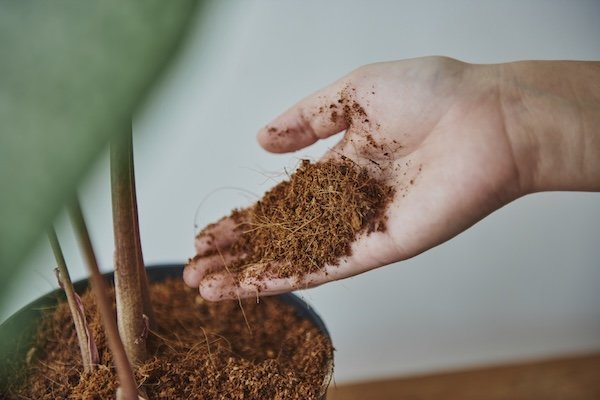
Watering
July is one of the hottest months of the summer, which is why we need to pay more attention to the water availability of our plants to prevent damaging drought stress. Water pots, planters and hanging baskets regularly during the cooler hours of the day to reduce evaporation, but without causing waterlogging. For flowerbeds and borders let’s do it when the soil is slightly dry without watering the plants directly from above but by watering the soil at the crown. To make things easier for us, thinking to the holidays, we can install or have a professional gardener install an automatic irrigation system, adjusting the water quantity and frequency in relation to the average temperatures during the day and night. An excellent solution for short periods of absence could be self-irrigating pots with integrated systems,. We can find many types on the market, preferably recycled plastic.
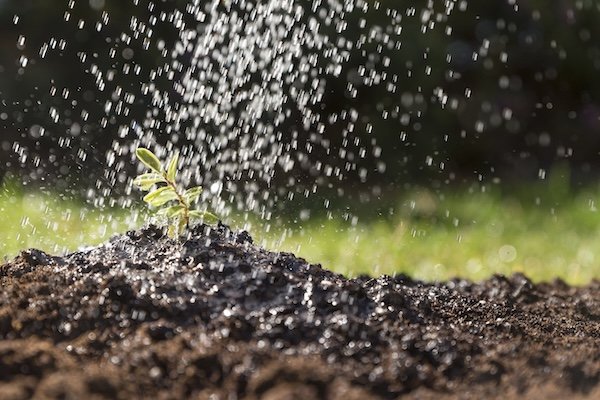
Sowing and transplanting
July is not a good month for planting trees and shrubs because the weather is hot and dry, often causing post-transplant stress. However, we can have fun, with the help of the youngest members of the family, sowing herbaceous flowering and horticultural plants; among the first are Digitale(Digitalis), forget me not (Myosotis) and Violacciocca(Matthiola incana) which will flower during the following spring-summer. For the vegetable garden, there is still time to sow the last of the summer vegetables such as dwarf green beans and kidney beans, and we can also start by sowing autumn-winter vegetables such as broccoli, cauliflower, cabbage, Savoy cabbage, chicory (Catalogna, radicchio, escarole), turnip greens and fennel in containers to be placed in a slightly shaded seedbed. To lend elegance to gardens and terraces we can plant hardy herbaceous perennials such as Achillea, Alcea, Echinacea, Nepeta, Santolina, Stachys, Rudbeckia, Thyme, Sedum and of course the stars of Italian summer balconies, Geraniums and Petunias; remember to water well after planting or repotting without causing water stagnation which not only causes root rot but also attracts annoying insects such as mosquitoes. If we are wondering which bulbs to plant in July, this is a good month for autumn-flowering crocuses by placing them about 8-10 cm deep with the tips pointing upwards.
Indoor plants
Fertilize indoor plants once a week by adding a specific liquid fertiliser to the moist substrate to be diluted in the irrigation water, continuing until autumn. Check the moisture level of the soil, watering more regularly as temperatures are higher in July and light levels increase, and ensure that the leaves are not burnt by direct summer sunlight by moving the pots slightly away from the windows. We can also intervene with light misting of the foliage for those species that require high relative humidity such as many Bromeliads. We regularly clean the leaves from dust with a cloth dampened with water, checking for the presence of parasites such as aphids, mealybugs and thrips, which should be removed with specific products suggested by our trusted garden centre. We repot the plants in larger containers if they have developed a larger root and aerial apparatus, always using a new, high quality medium.
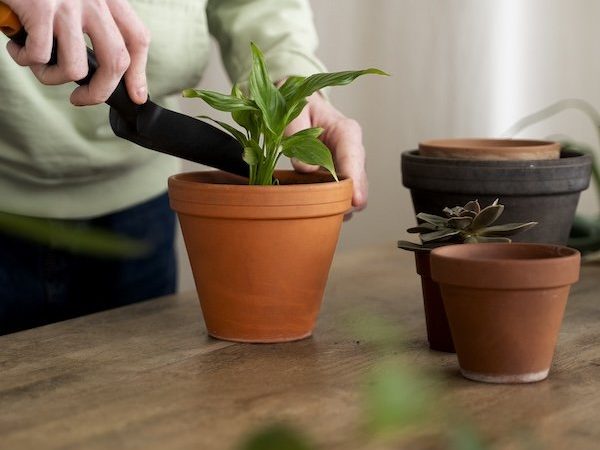
Lawn
If we have not fertilized during the previous month, at the beginning of July we evenly distribute granular potassic fertiliser in order to improve our lawn’s resistance to heat and drought, for which we can also intervene with biostimulation by foliar application of a product containing humic acids and fulvic acids. The situation is different if the turf consists of macro-terms, i.e. grass species that grow well in high summer temperatures, in which case we apply a specific granular fertiliser with a high nitrogen content as well as a balanced liquid fertiliser. Cut the lawn, always remembering to check that the blades of the lawnmower are sharp and set them higher than usual, on average at a height of more than 6/7 cm, in order to reduce the temperature at the crown level and reduce the quantity of water applied, thus contributing to water saving; increasing the height of the cut will also help to limit the development of weeds, since having a more compact and higher turf, the weeds will not find space and light to develop. During the summer, it is normal to water the lawn more than in other seasons, but it is this extra water that must be calibrated, i.e. it is important to prevent the turf from remaining wet for a long time because the simultaneous presence of heat and high humidity, caused by irrigation, can lead to the development of fungal diseases, for which it is necessary to intervene both with a treatment aimed at inducing greater resistance to disease, for example by applying a product based on potassium phosphite, and by using antagonist microrganisms such as Trichoderma spp.

And more…
Let’s pick raspberries with out babies, and if we are lucky enough to have a vegetable garden, we peek in every day to see if any of the delicacies are ripe. Let’s pick some lavender-scented inflorescences, leave fresh water and food specifically for birds and other wildlife available. Let’s sit in the shade of a parasol with a glass of water and freshly picked mint, then with pen and notebook start making notes of any changes we would like to make next year to our green space. It’s also time to order bulbs to be planted in autumn for spring flowering.
What do you say? It’s summer, let’s relax! Of course, but without forgetting that proper design and maintenance of our garden and terrace are of primary importance to obtain a space of high ornamental value that will allow us to spend unforgettable days wrapped in colours and scents.
